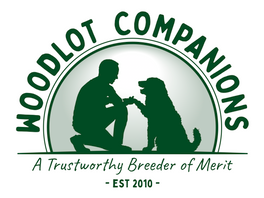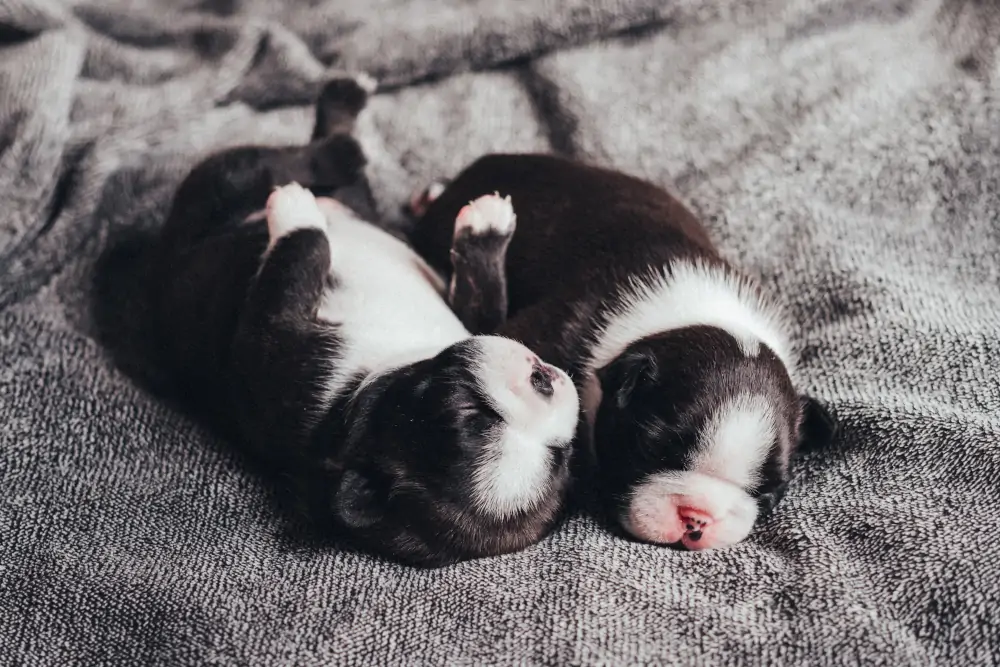How Do I Find A Good Breeder?
When it comes to the breeding practices of dogs there can be a lot of curiosity around the process, especially when one breed is significantly different in size than the other and for that reason we aim to answer the many questions we’ve heard over the years! It is a point of pride to make our breeding program one of the most trustworthy in the industry by having higher standards than the trade requires.
Is Woodlot Companions an Ethical Breeder?
Our ethical breeding practices include genetic testing, importing new breeding stock to keep our genetic lines diversified, as well as regular vet checks and vaccinations. We also employ the use of state of the art equipment on our property for testing our mommas to ensure we time our breeding at the peak of their heat cycle. Though it may seem like puppies are in abundance come springtime, the canine breeding cycle does not follow this kind of logical pattern we see in nature. Each female follows it’s own timing – meaning it occurs no matter the season or change in temperature. However, females living in close proximity to one another will start to synchronize. Often when a female is in heat, it can seem quite unpredictable as the phases of the cycle are just as unique as each individual dog.
Heat Cycles in Female Dogs
Heat cycles for females are diverse between breeds, with smaller dogs cycling two or maybe three times a year and giant breeds cycling only once every twelve months. When a dog is in heat, it can last between two to three weeks. The first seven to ten days are when the females attract males, but do not allow mating to occur. It is during the last five to ten days when blood flow slows and then stops, that they will accept males. It is this time of the phase called estrus that is considered optimal for breeding. However, some females ovulate as early as the third or fourth day or as late as the eighteenth day. As you can imagine this makes ideal timing tricky to manage. With the help of our on-site equipment, the natural progression of progesterone can be tracked and this ensures the best treatment of the mothers and results in optimal health for their puppies. By being able to take blood samples to test progesterone levels on our property it negates the need to make frequent trips to the veterinarian, causing unnecessary stress. Thankfully all this mystery is not an issue with male dogs as they do not have a sexual cycle and respond to females in heat at any time of the year, however they are most fertile when fully mature. If you’d like more in-depth information concerning this part of the breeding process please check out this article from the AKC.
How Do Breed a Mini Poodle to a Large Breed Dog?
Most of the dogs we breed have a heat cycle averaging six to nine months. If we are breeding two dogs of the same kind we let the natural progression of things take it’s course. However, if we have two different breeds of drastically differing sizes, such as a Mini Poodle and a Bernese Mountain Dog, that we want to reproduce – artificial insemination is necessary. It is important in these pairings that the mother dog is the larger breed of the two being combined. Not only would it make breeding difficult (or nearly impossible) for the male to mate, but if the female was the smaller of the two breeds it would be incredibly dangerous for her. The likelihood that she would be able to see the pregnancy through to term would be slim and the litter that she carries would be lucky to survive. This is why it is considered bad practice to mate a smaller female with a larger male. For these reasons artificial insemination is necessary and we find it an indispensable necessity to invest in the latest technology, which provides valuable insight to keep our mothers’ safety a priority while they enjoy all our property has to offer. We believe the best puppies are made by happy dogs who enjoy the freedom to run, play, socialize and be our beloved companions while in our care.
How Do You Know if a Female Dog is Healthy for Breeding?
Another concern we take into account before breeding our female dogs is the viability of their uterus. Each dog will have it’s own individual number of litters it can safely produce, therefore it is an established practice to have our veterinarian check their reproductive health before every breeding – including the first. Our dogs are not considered for breeding until they have had their second or third heat cycle. It has been debated whether or not it is best for a female dogs’ health to continue to breed each cycle after their first. After much research we are of the belief that it is more healthy for the mothers if they have a litter back to back rather than every other heat. It has been shown that while a dog is in the prime age for carrying litters it is actually beneficial to their health for them to continue having them every heat cycle. Research has shown this practice can prevent the risk of mammary cancers and uterine diseases. Furthermore, it has been proven that if you wait to breed a female beyond the third heat cycle it can be detrimental to their health and should a dog become pregnant for the first time after age three, the likelihood of needing veterinary assistance to deliver the puppies safely would increase. Most females average five to six litters of various sizes without harm to their own health in their lifetimes. We ensure that only optimal dogs in a state of vitality are bred. It is our goal first and foremost to be good stewards of these animals that bring such joy – ensuring every puppy and parent lives their best life possible.
What Happens to Our Breeding Dogs Who are no Longer Fertile?
You may be wondering what happens to these dogs once they graduate from breeding- since most can have two litters a year- this means they will be done reproducing between the ages of five or six. By the time a female is six years old her fertility starts to naturally decline anyway, so they are spayed. Of course, these dogs still have so much life left and an abundance of love and joy to give. Not every future dog owner wants a puppy. Though puppies are undeniably adorable – they can also be bundles of energy that is not everyone’s cup of tea. So when the rare occasion arises to graduate one of our beautifully grown breeding dogs (with handpicked traits we wanted to pass along to our puppies) they retire to loving homes to live out their days as mans’ best friend.



